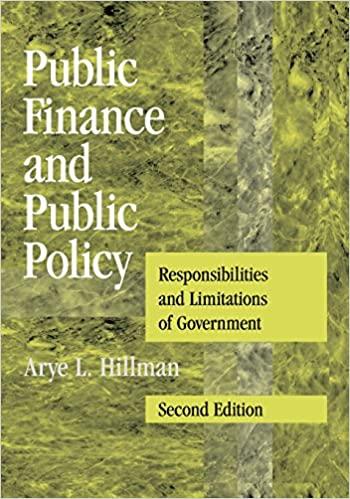Answered step by step
Verified Expert Solution
Question
1 Approved Answer
Please Answer part one in IRAC form (Issue, Rules of Law, Analysis, Conclusion) Refer to cases 18.5 and 18.6 as instructed in question image. Thank
Please Answer part one in IRAC form (Issue, Rules of Law, Analysis, Conclusion)



Refer to cases 18.5 and 18.6 as instructed in question image.
Thank you, will give thumbs up!
In Chapters Seventeen and Eighteen we covered business structures that are separate legal entities in the eyes and mind of the law. Among other benefits of these business organizations is the element of limited liability. There is an exception to this structural advantage - piercing the corporate veil - which removes the shield of protection of the owner's personal assets. This concept is discussed in both chapters assigned this week as it applies to both the LLC and corporations. This week's discussion focuses on the activities of Alianza, LLC or more particularly its primary owner. (Business Case Problem 185 at the end of Chapter 18). Given what the facts present to you, apply your legal reasoning in the IRAC format starting with the issue the Business Case Problem suggests: are there sufficient facts [grounds] to pierce the corporate veil of Alianza, LLC and hold Alianza Dominicana personally liable? For this discussion incorporate in your analysis the Dog House Investments, LLC v. Teal Properties, Inc. case (Case in Point 18.6 of the text). Rule: what rule(s) do you apply? Application/Conclusion: legally analyze the rule(s) to the facts to reach your conclusion. Part 2 For this part of the discussion: Let us imagine Alianza, is in a general partnership with her sister, Susana. As partners they meet the essential elements of a Partnership: 1) sharing of profits; 2) joint ownership of the business; and 3) equal rights to be involved in the management of the business. As above, Aliazna, as a partner in the business, makes a contract promising that the partnership will pay rent to Amsterdam Associates, LLC to rent, without informing Susana of the contact. The partnership fails to make any rent payments and is sued by Amsterdam Associates, LLC. Is Susana personally liable for the breach of contract if the assets in the partnership are inadequate to pay for the damages to Amsterdam Associates LLC? Would Susana be personally liable if she were a limited partner in the partnership? Due by 11:59pm Pacific Time on Wednesday of Week 8. 18-5. Piercing the Corporate Veil. In New York City, 2406-12 Amsterdam Associates, LLC, brought an action in a New York state court against Alianza Dominicana and Alianza, LLC, to recover unpaid rent. The plaintiff asserted cause to pierce the corporate veil, alleging that Alianza Dominicana had made promises to pay its rent while discreetly forming Alianza, LLC, to avoid liability for it. According to 2406-12, Alianza, LLC, was 90 percent owned by Alianza Dominicana, had no employees, and had no function but to hold Alianza Dominicana's assets away from its creditors. The defendants filed a motion to dismiss the plaintiff's claim. Assuming that 240612 's allegations are true, are there sufficient grounds to pierce the corporate veil of Alianza, LLC? Discuss. [2406-12 Amsterdam Associates, LLC v. Alianza, LLC, 136 A.D.3d 512, 25 N.Y.S.3d 167 (1 Dept. 2016)] (See Piercing the Corporate Veil.) 18-6. Business Case Problem with Sample Answer-Rights of Shareholders. FCR Realty, LLC, and Clifford B. Green \& Sons, Inc., were co-owned by three brothers-Frederick, Clifford Jr., and Richard Green. Each brother was a shareholder of the corporation. Frederick was a controlling shareholder, as well as president. Each brother owned a one-third interest in the LLC. Clifford believed that Frederick had misused LLC and corporate funds to pay nonexistent debts and liabilities and had diverted LLC assets to the corporation. He also contended that Frederick had disbursed about $1.8 million in corporate funds to Frederick's own separate business. Clifford hired an attorney and filed an action on behalf of the two companies against Frederick for breach of fiduciary duty. Frederick argued that Clifford lacked the knowledge necessary to adequately represent the companies' interests because he did not understand financial statements. Can Clifford maintain the action against Frederick? If so, and if the suit is successful, who would recover any damagesStep by Step Solution
There are 3 Steps involved in it
Step: 1

Get Instant Access to Expert-Tailored Solutions
See step-by-step solutions with expert insights and AI powered tools for academic success
Step: 2

Step: 3

Ace Your Homework with AI
Get the answers you need in no time with our AI-driven, step-by-step assistance
Get Started


